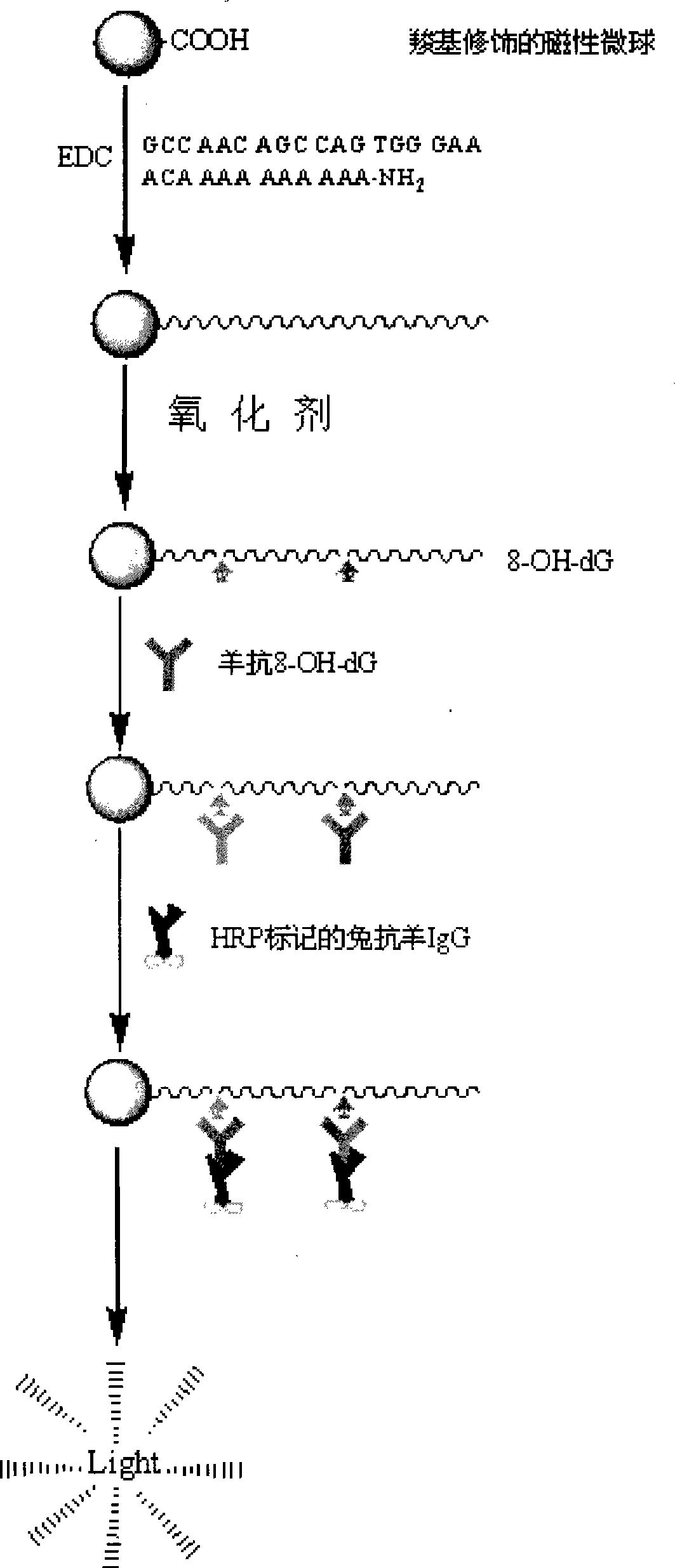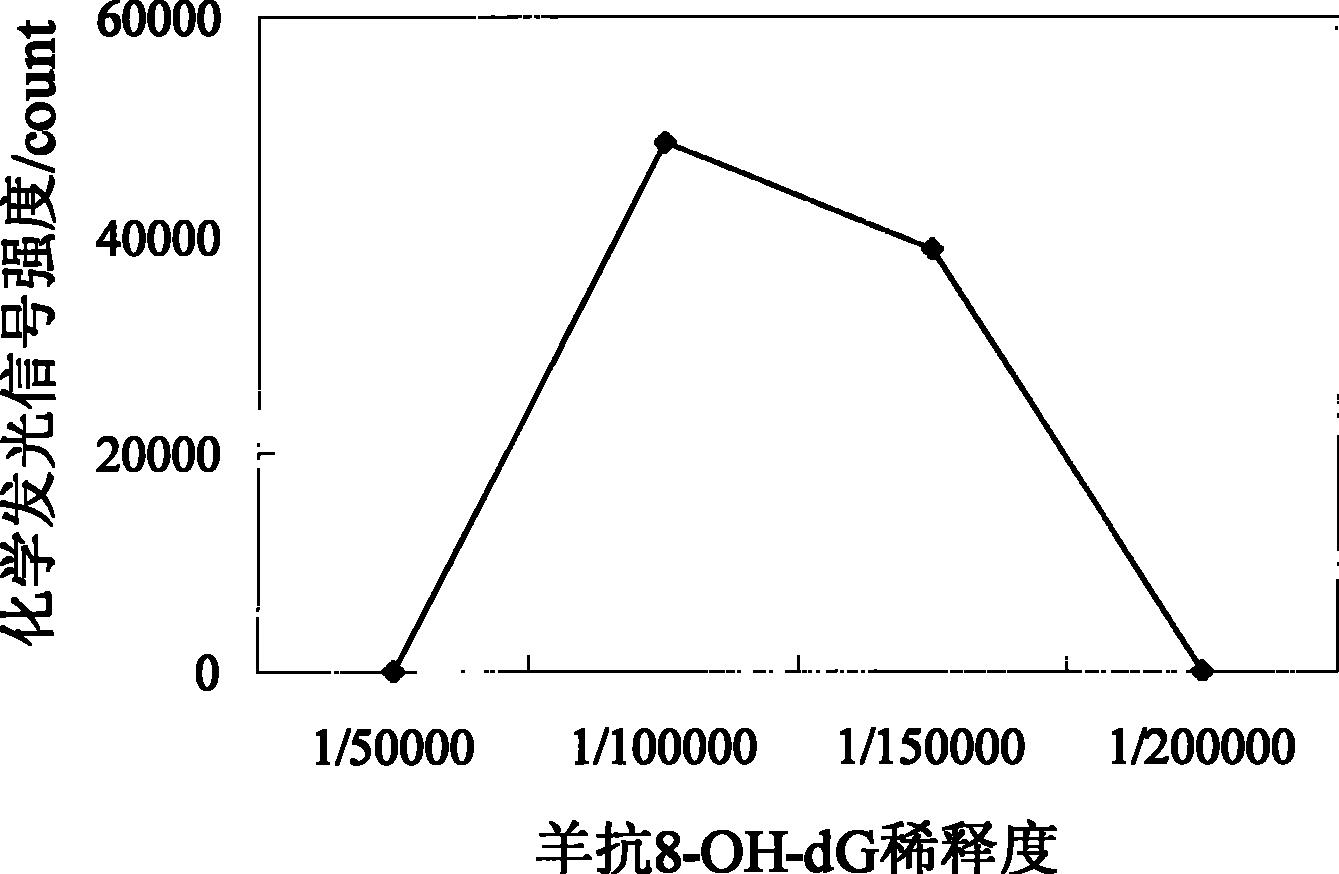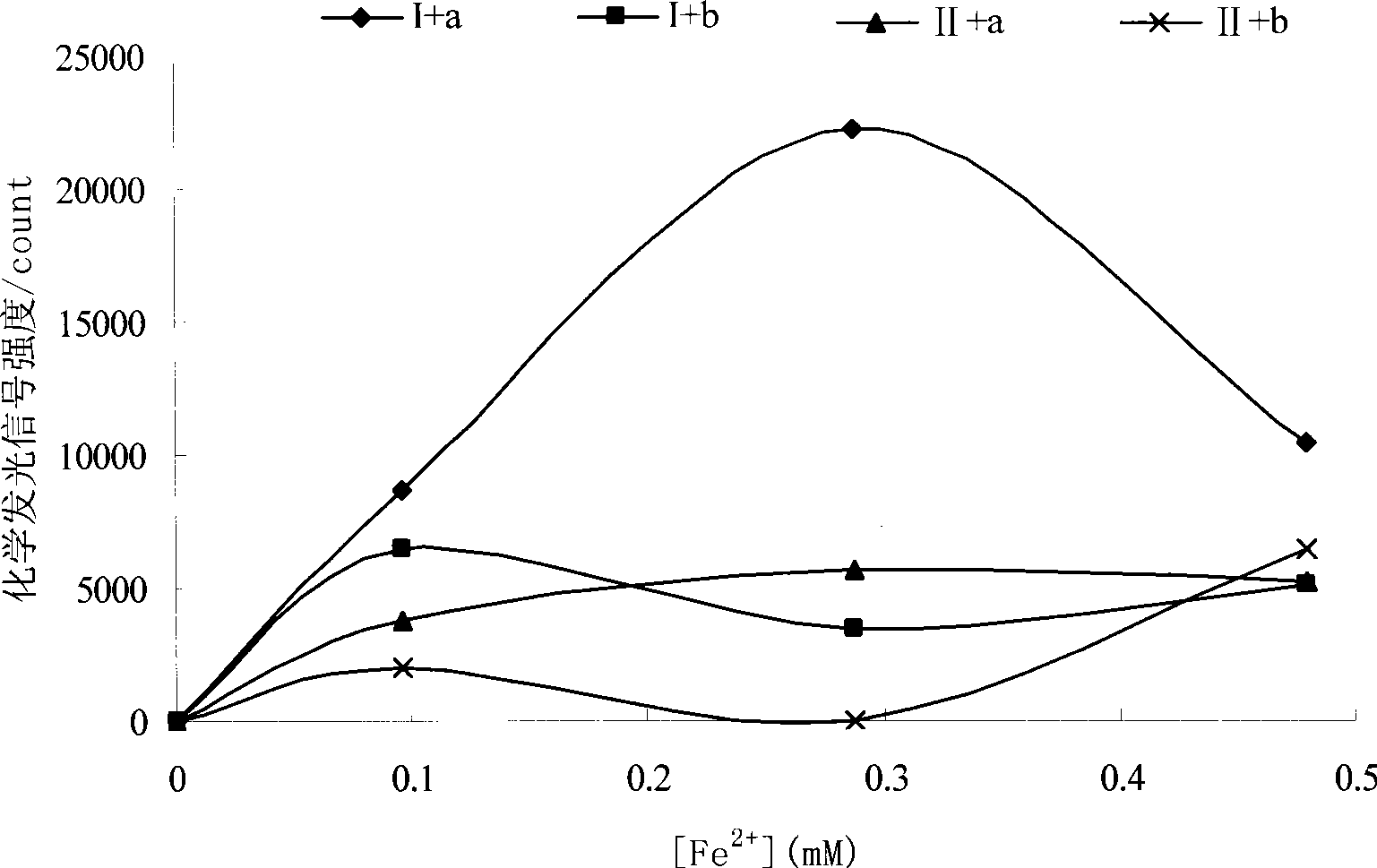Method for evaluating protective action of Chinese herbal medicine to DNA oxidation damage
A technology of oxidative damage and protection, applied in the direction of biochemical equipment and methods, microbial determination/inspection, measurement devices, etc., can solve the problems of lung fibroblast DNA oxidative damage and so on
- Summary
- Abstract
- Description
- Claims
- Application Information
AI Technical Summary
Problems solved by technology
Method used
Image
Examples
Embodiment 1
[0029] Embodiment 1 Fenton's reagent causes the mensuration of DNA oxidative damage
[0030] 1. Reagents and instruments:
[0031] All reagents were of analytical grade, and the experimental water was deionized ultrapure water. Imidazole buffer at pH 6.0; 0.1M PBS, pH=7.2-7.4; washing solution is PBS containing 0.1% Tween 20; blocking solution I is 40mM glycine, 1% BSA imidazole buffer; blocking solution II 10% BSA in PBS.
[0032] N-(3-dimethylaminopropyl)-N'-ethyl-carbodiimide hydrochloride (EDC) was purchased from Sigma; HRP-labeled rabbit anti-goat IgG was purchased from Beijing Boaosen Biotechnology Co., Ltd. Goat anti-8-OH-dG was purchased from abcam company; HRP chemiluminescence kit was purchased from Milipore company; carboxy-modified magnetic microspheres (1.5 μm, Bangs Laboratories, Inc.); DNA (5'-GCC AAC AGC CAG TGG GAA ACA AAAAAAAAA-NH 2 -3'), synthesized by Shanghai Yingjun Biotechnology Co., Ltd. Oxidizing agent: FeCl 2 Aqueous solution (containing 0.04% H...
Embodiment 3
[0041] Example 3 Different Fe 2+ The effect of concentration on the intensity of chemiluminescence
[0042] Fenton's reagent that can generate hydroxyl radicals (ie Fe 2+ Mediated H 2 o 2 ) is a relatively classic DNA damage oxidant, where Fe 2+ The concentration has a significant effect on the amount of 8-OH-dG produced, image 3 show different Fe 2+ The influence of concentration on the luminous intensity can be seen from the figure, with Fe 2+ As the concentration increases, the amount of 8-OH-dG produced also increases, and then decreases. It may be that excessive oxidants can cause DNA strand breaks, thereby reducing the amount of 8-OH-dG produced. Our detection Methodological studies of this effect have also shown results similar to those in the literature. In the experiment, I represents the 20,000-fold dilution of HRP-labeled rabbit anti-goat IgG, II represents the 40,000-fold dilution; a represents the 100,000-fold dilution of the goat anti-8-OH-dG, and b repre...
Embodiment 4
[0043] The effects of several Chinese herbal medicines on DNA oxidative damage induced by Fenton's reagent were investigated respectively. Take quercetin and tanshinone as examples (eg Figure 4 ), no traditional Chinese medicine was added in the control group, only Fenton’s reagent was used to oxidize, Fe 2+ The concentration is 0.288mM, H 2 o 2 The concentration is 0.12M; Chinese medicine group is added Chinese medicine before adding Fenton, and its final concentration is 10 -4 M. Depend on Figure 4 It can be seen that the 8-OH-dG produced in the DNA reaction group added with quercetin or tanshinone is less than that of the corresponding group without Chinese medicine, indicating that these two Chinese medicines have a better protective effect on DNA oxidative damage caused by Fenton reagent .
PUM
 Login to View More
Login to View More Abstract
Description
Claims
Application Information
 Login to View More
Login to View More - R&D
- Intellectual Property
- Life Sciences
- Materials
- Tech Scout
- Unparalleled Data Quality
- Higher Quality Content
- 60% Fewer Hallucinations
Browse by: Latest US Patents, China's latest patents, Technical Efficacy Thesaurus, Application Domain, Technology Topic, Popular Technical Reports.
© 2025 PatSnap. All rights reserved.Legal|Privacy policy|Modern Slavery Act Transparency Statement|Sitemap|About US| Contact US: help@patsnap.com



